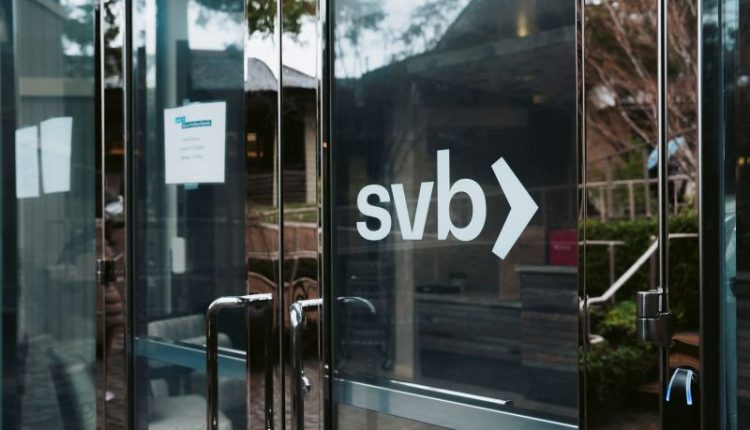
A version of this story first appeared in CNN Business’ Before the Bell newsletter. Not a subscriber? You can sign up right here. You can listen to an audio version of the newsletter by clicking the same link.
New York CNN —
Silicon Valley Bank’s collapse last week sent tingles of panic down investors’ spines as it highlighted a larger problem across the banking sector: The widening gap between the value large lenders place on the bonds they hold and what they’re actually worth on the market.
SVB’s downfall was tied, in part, to the plunge in the value of bonds it acquired during boom times, when it had a lot of customer deposits coming in and needed somewhere to park the cash.
But SVB isn’t the only institution with that issue. US banks were sitting on $620 billion in unrealized losses (assets that have decreased in price but haven’t been sold yet) at the end of 2022, according to the FDIC.
What’s happening: Back when interest rates were near zero, US banks scooped up lots of Treasuries and bonds. Now, as the Federal Reserve hikes rates to fight inflation, those bonds have declined in value.
When interest rates rise, newly issued bonds start paying higher rates to investors, which makes the older bonds with lower rates less attractive and less valuable.
The result is that most banks have some amount of unrealized losses on their books.
“The current interest rate environment has had dramatic effects on the profitability and risk profile of banks’ funding and investment strategies,” said FDIC Chairman Martin Gruenberg in prepared remarks at the Institute of International Bankers last week.
“Unrealized losses weaken a bank’s future ability to meet unexpected liquidity needs,” he added.
In other words, banks might find they have less cash on hand than they thought — especially when they need it — because their securities are worth less than they expected.
“Many institutions — from central banks, commercial banks and pension funds — sit on assets that are worth significantly less than reported in their financial statements,” said Jens Hagendorff, a finance professor at King’s College London. “The resulting losses will be large and need to be financed somehow. The scale of the problem is starting to cause concern.”
Still, there’s no need to panic yet, say analysts.
“[Falling bond prices are] only really a problem in a situation where your balance sheet is sinking quite quickly… [and you] have to sell assets that you wouldn’t ordinarily have to sell,” said Luc Plouvier, senior portfolio manager at Van Lanschot Kempen, a Dutch wealth management firm.
Most large US banks are in good financial condition and won’t find themselves in a situation where they’re forced to realize bond losses, said Gruenberg.
Shares of larger banks stabilized Friday after plunging to their worst day in nearly three years on Thursday.
— Julia Horowitz and Anna Coobin contributed reporting.
Do we need to increase unemployment to bring inflation down?
Last week Senator Elizabeth Warren grilled Federal Reserve Chair Jerome Powell about American job losses being potential casualties of the central bank’s battle against high inflation.
Warren, a frequent critic of the Fed’s leader, noted that an additional 2 million people would have to lose their jobs if the unemployment rate rises from its current 3.6% rate to reach the Fed’s projections of 4.6% by the end of the year.
“If you could speak directly to the two million hardworking people who have decent jobs today, who you’re planning to get fired over the next year, what would you say to them?” Warren asked.
Powell argued that all Americans, not just two million, are suffering under high inflation.
“Will working people be better off if we just walk away from our jobs and inflation remains 5% or 6%?” Powell replied.
Warren cautioned Powell that he was “gambling with people’s lives.”
The discussion was part of a larger cost-benefit analysis conversation that keeps popping up around the jobs market: Which is worse — widespread job loss or elevated inflation?
CNN spoke with two top economic analysts with different perspectives to gain a deeper understanding of the debate.
Below is our interview with Roosevelt Institute director Michael Konczal. Tomorrow you’ll hear from Johns Hopkins economics professor Laurence Ball.
This interview has been edited for length and clarity.
Before the Bell: Do we need unemployment to rise in order to ease inflation rates?
Michael Konczal: Demand for labor is so high that we probably have the ability to take heat off of the economy by slowing some measures of hiring — the quit rate or the job openings rate, for instance — which would allow wages to decelerate and cool the economy but not necessarily put a lot of people out of work.
Powell argued that high inflation could be worse for the economy and people than a tick up in unemployment. What’s your take on that cost-benefit analysis?
The thing that raised my eyebrow was Powell saying that if he walked away from his job inflation would remain at 5 or 6%. Inflation over the last three months has not been 6%, depending on what you’re looking at it hasn’t really been 5% either.
Inflation comes at a high cost when it’s at 5% or 6%, but when it does comes down to 2.5% or 3%, I’d want to know how urgent he thinks it is to get that last mile to 2% inflation if it meant two million plus people were out of work. I think the dirty secret is that economists can’t really tell you what the negative is on inflation being at 2.5% instead of 2% — there are some winners and there are some losers, but the net economic costs are less clear.
It’s gonna be really brutal on the labor market to bring inflation down to like that last mile, it might involve trade-offs that are incredibly harsh. I think it would be really devastating for so many people to lose their jobs for what is essentially a made-up number [the 2% inflation target].
How serious do you think Powell is about sticking to his 2% inflation target?
Powell does not want financial markets to become frothy or financial conditions to loosen so he needs to appear hawkish, even if he doesn’t want to be that hawkish. On the other hand, they’re playing with live ammo. This is real, millions of people are going to lose their jobs if the Fed does what it says it wants to do.
Source: edition.cnn.com

